Split, Croatia: Sun City for Retired Emperors
Posted on September 8,2018 By John Compisi
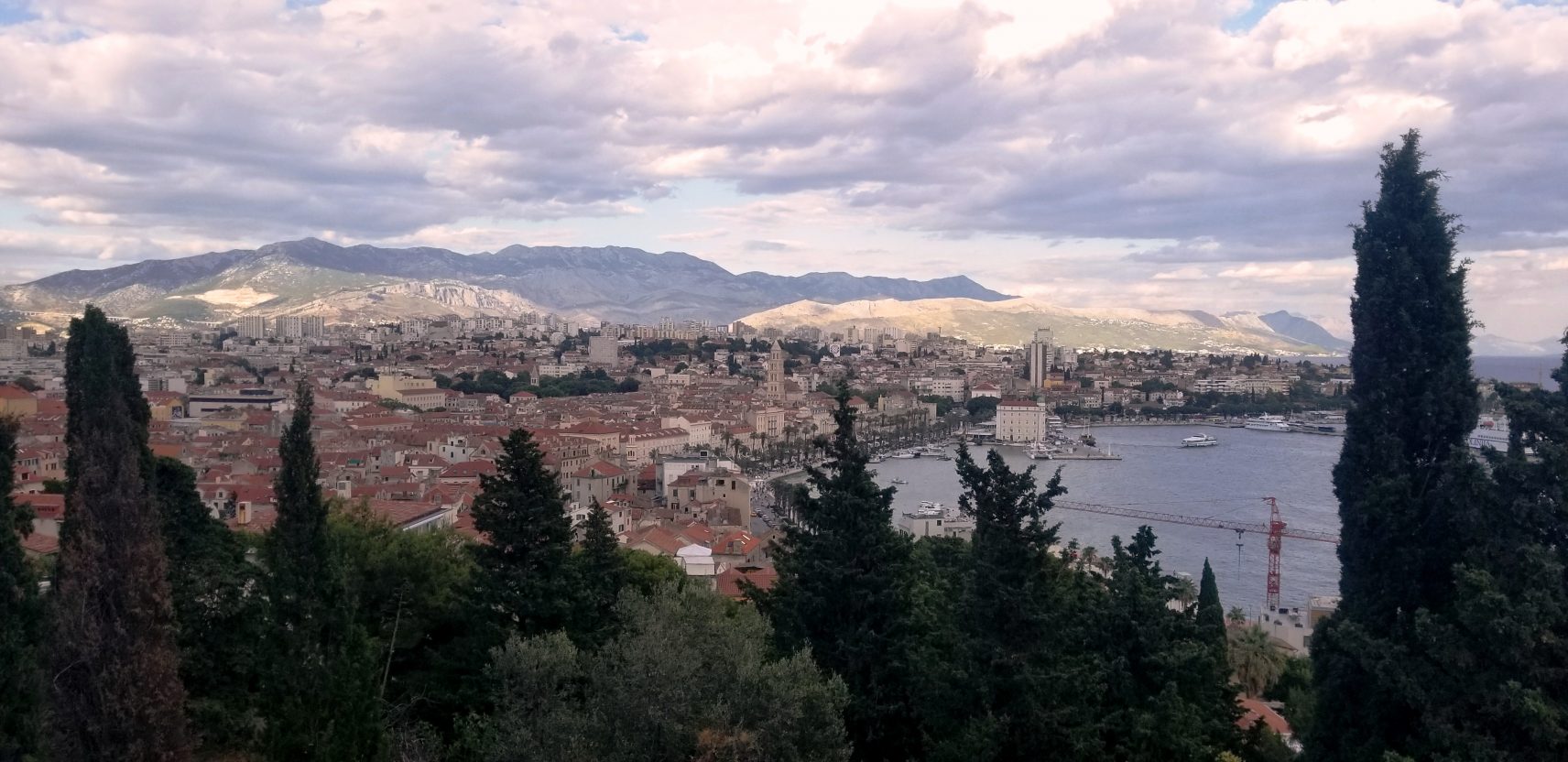
Split, Croatia is an ancient city that grew up around a delightful piece of unique history. Roman Emperor Diocletian’s Palace, is both massive and architecturally interesting, and perhaps the most fascinating aspect of Split.
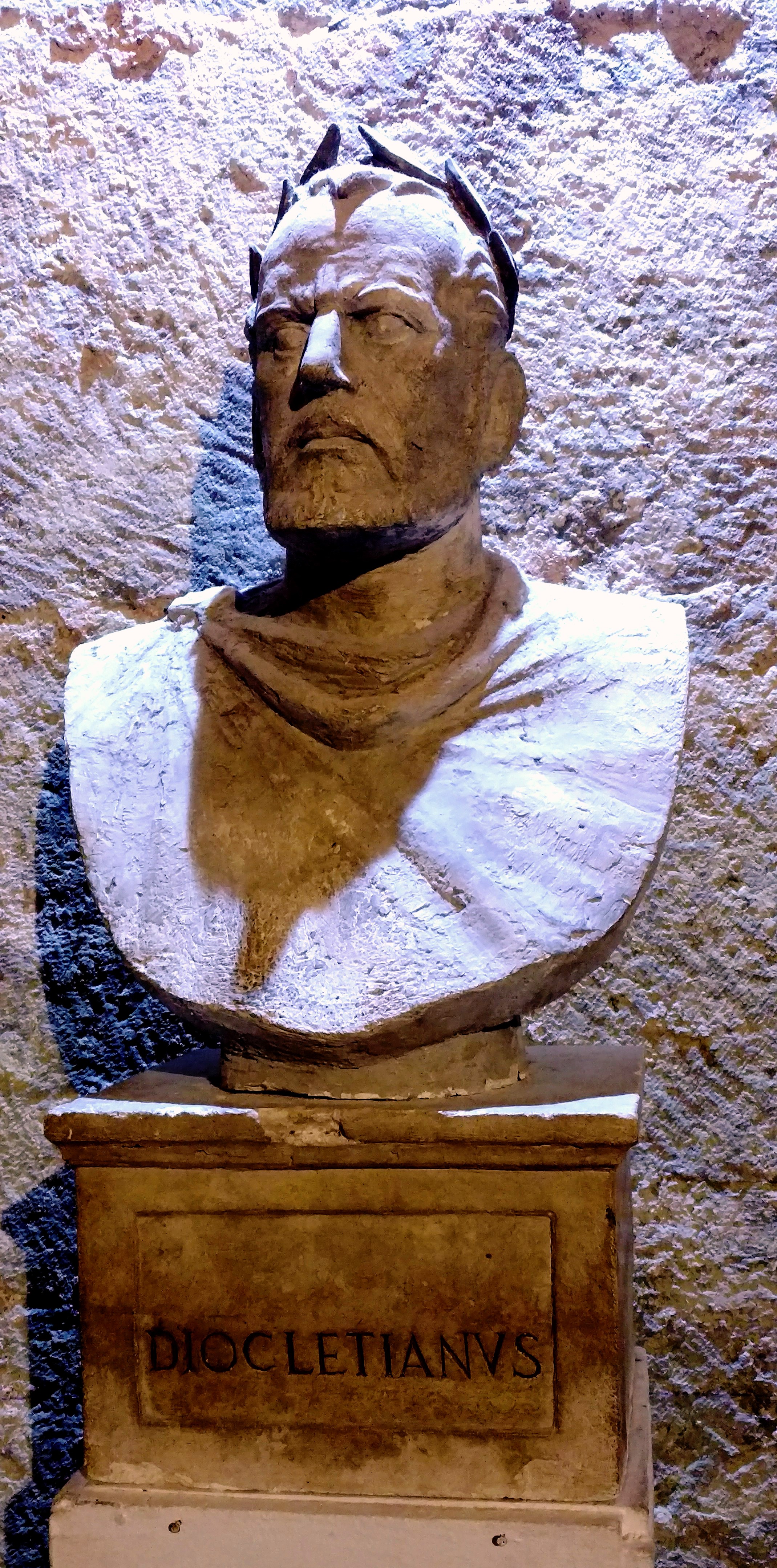 Bust of Emperor Diocletian inside the Palace below ground spaces. (L.Compisi)
Bust of Emperor Diocletian inside the Palace below ground spaces. (L.Compisi)
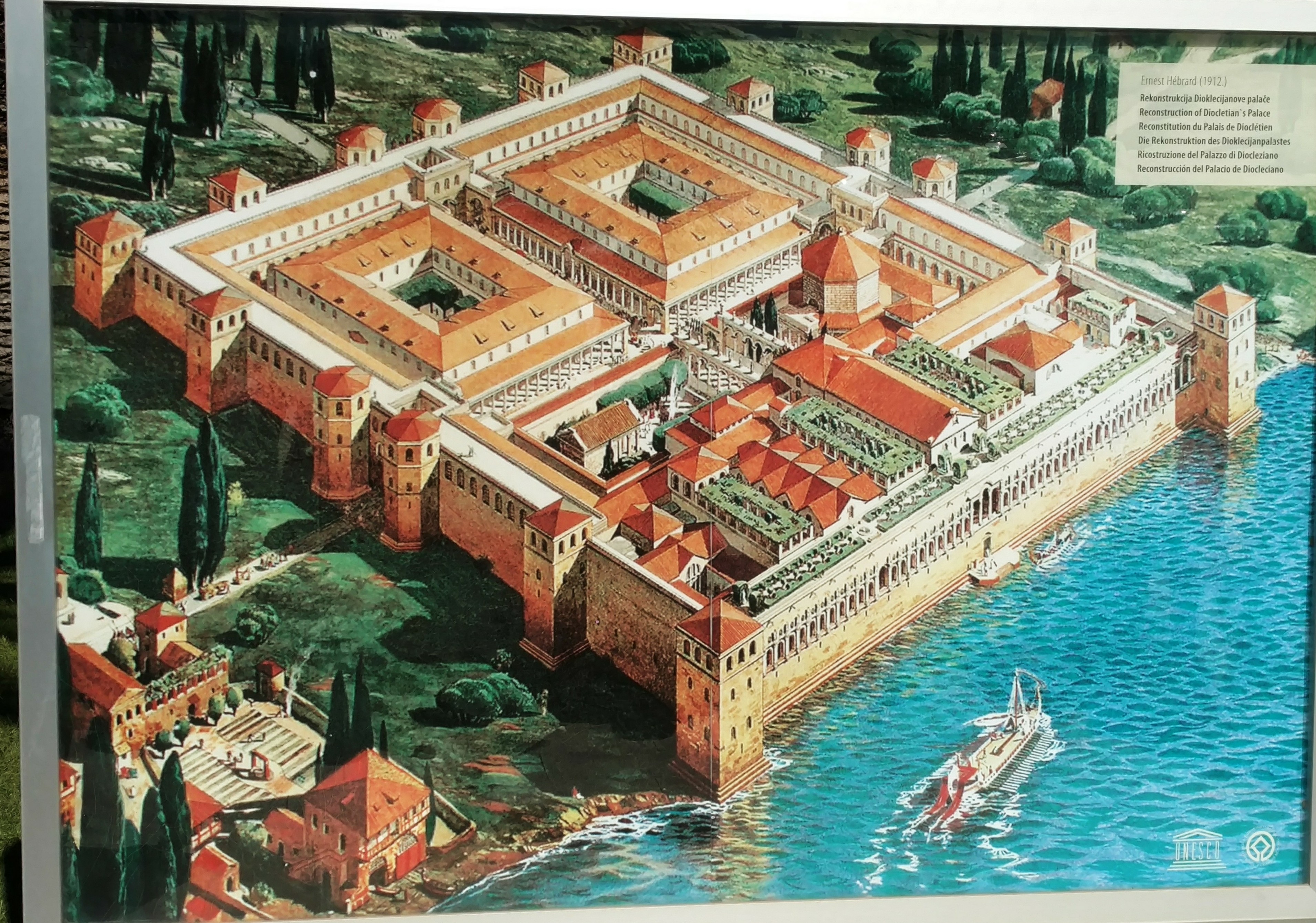 Artist’s conception of the Palace layout. (L.Compisi)
Artist’s conception of the Palace layout. (L.Compisi)
The Palace, actually more like a fortress, was built in anticipation of Diocletian’s retirement on May 1st, 305 AD. As a native of the Roman province of Dalmatia, Diocletian wanted to spend his last years in his native land. Split, as it came to be known, was only four miles from Salona, the provincial capital of Dalmatia. Diocletian’s Palace was designated a World Heritage Site in 1979.
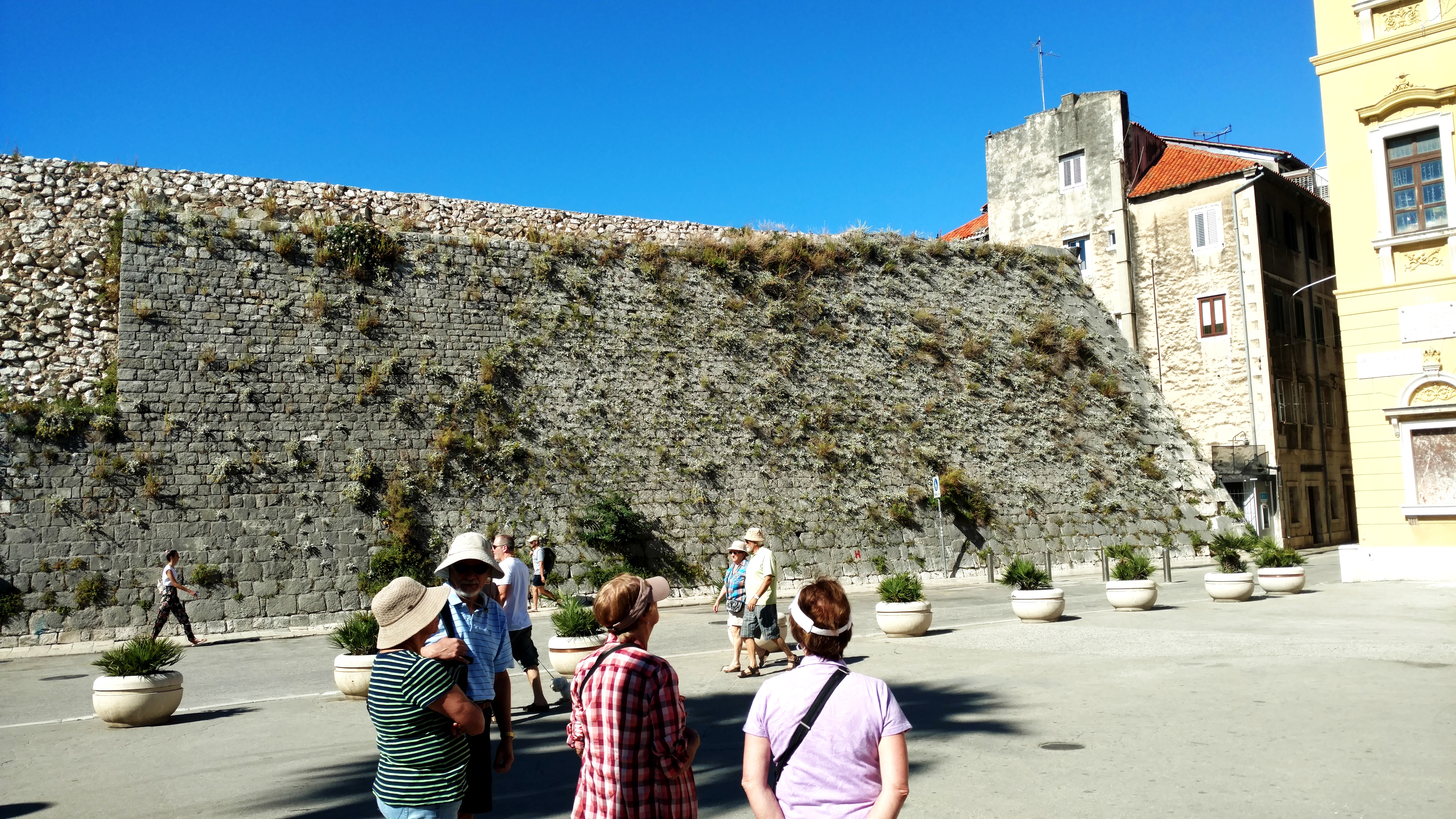 Ancient portion of the exterior Palace walls (L.Compisi)
Ancient portion of the exterior Palace walls (L.Compisi)
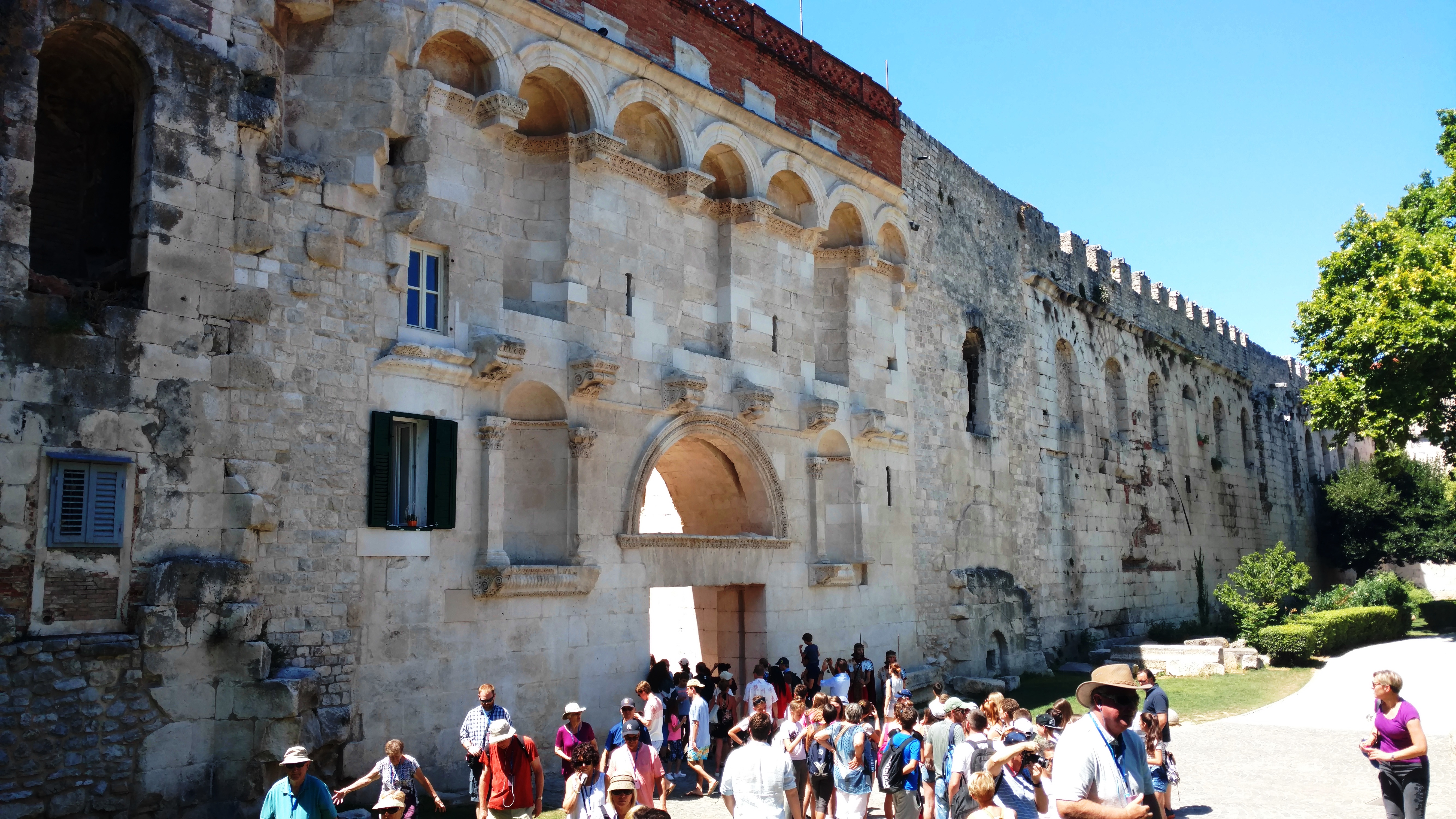 The eastern Golden Gate of the Palace (L.Compisi)
The eastern Golden Gate of the Palace (L.Compisi)
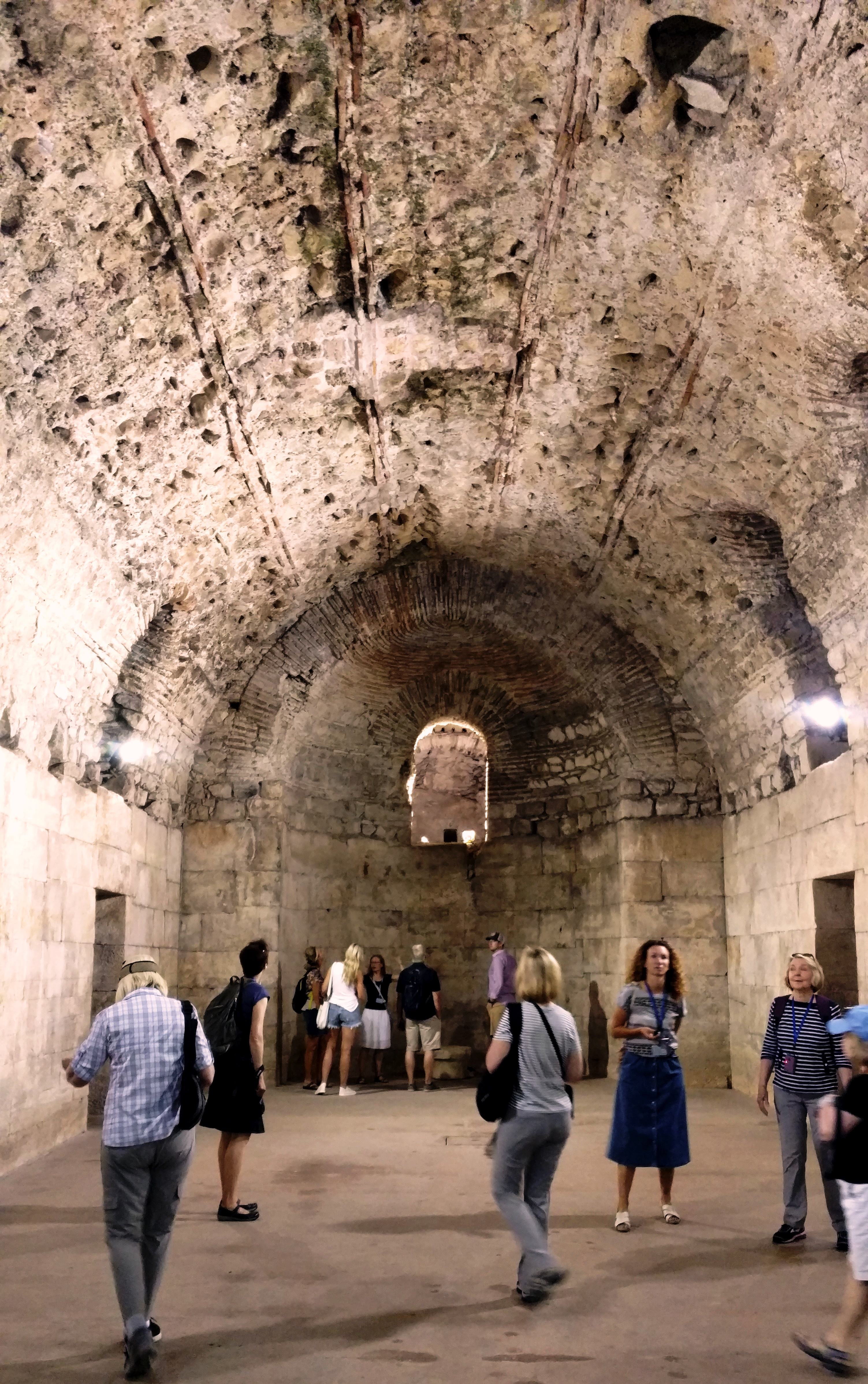 Amazing Roman vaulted arches below ground supporting the Palace (L.Compisi)
Amazing Roman vaulted arches below ground supporting the Palace (L.Compisi)
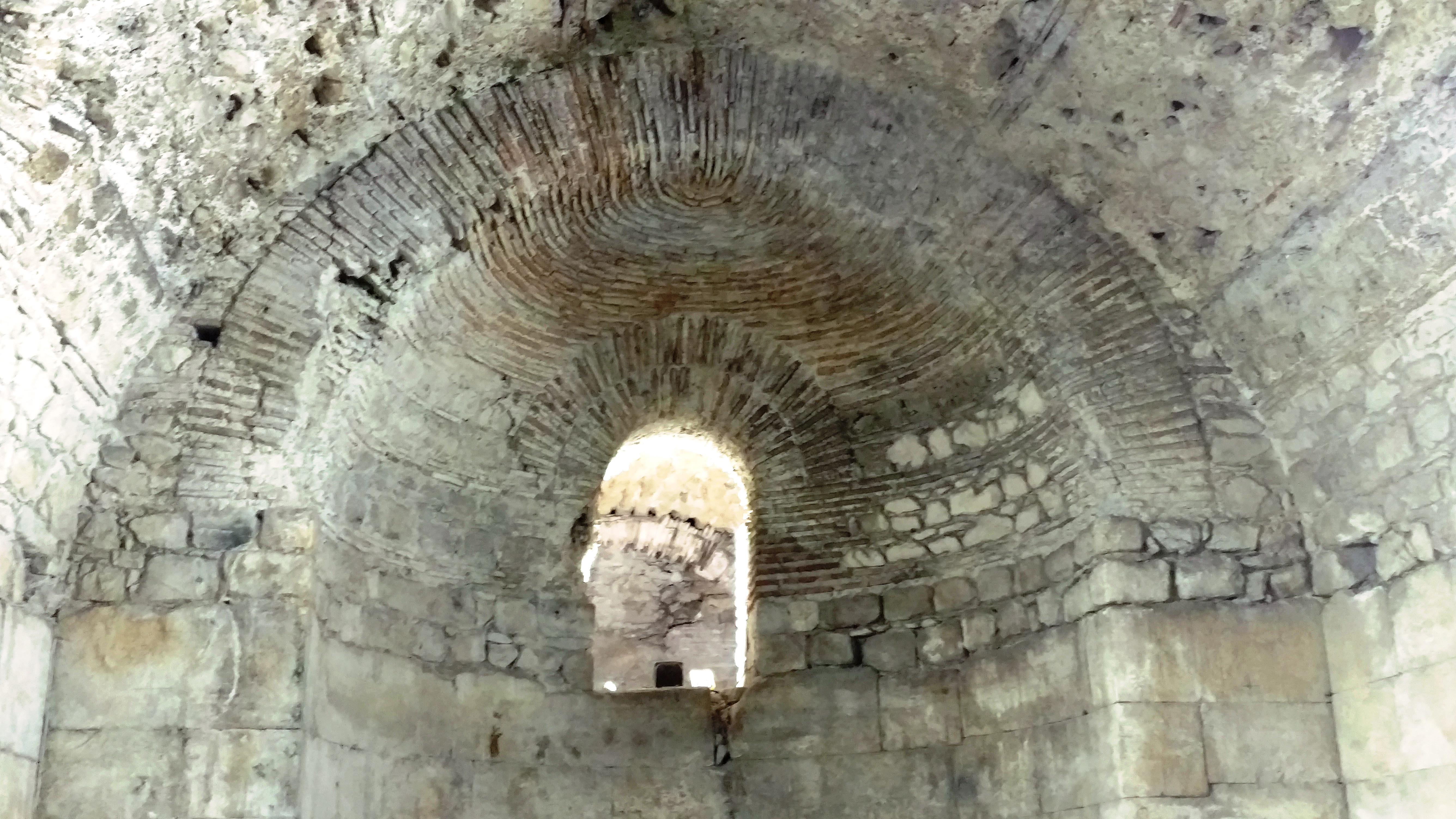 More Palace storage area and arches (L.Compisi)
More Palace storage area and arches (L.Compisi)
Split, and the Palace, may be familiar to some because of its role in the blockbuster HBO hit, Game of Thrones. Some episodes of the 4th Season were filmed in the Palace. The Palace comprises about half of what is now the old town area of Split. It is situated along a natural bay that today offers the Riva Promenade, a long seaside promenade with a beach area as well as a view of the Cruise ship and Ferry port at one end of the town. The Promenade has restaurant after restaurant, shops, bars, cafes and wonderful ice cream shops. Quite inviting and very beautiful.
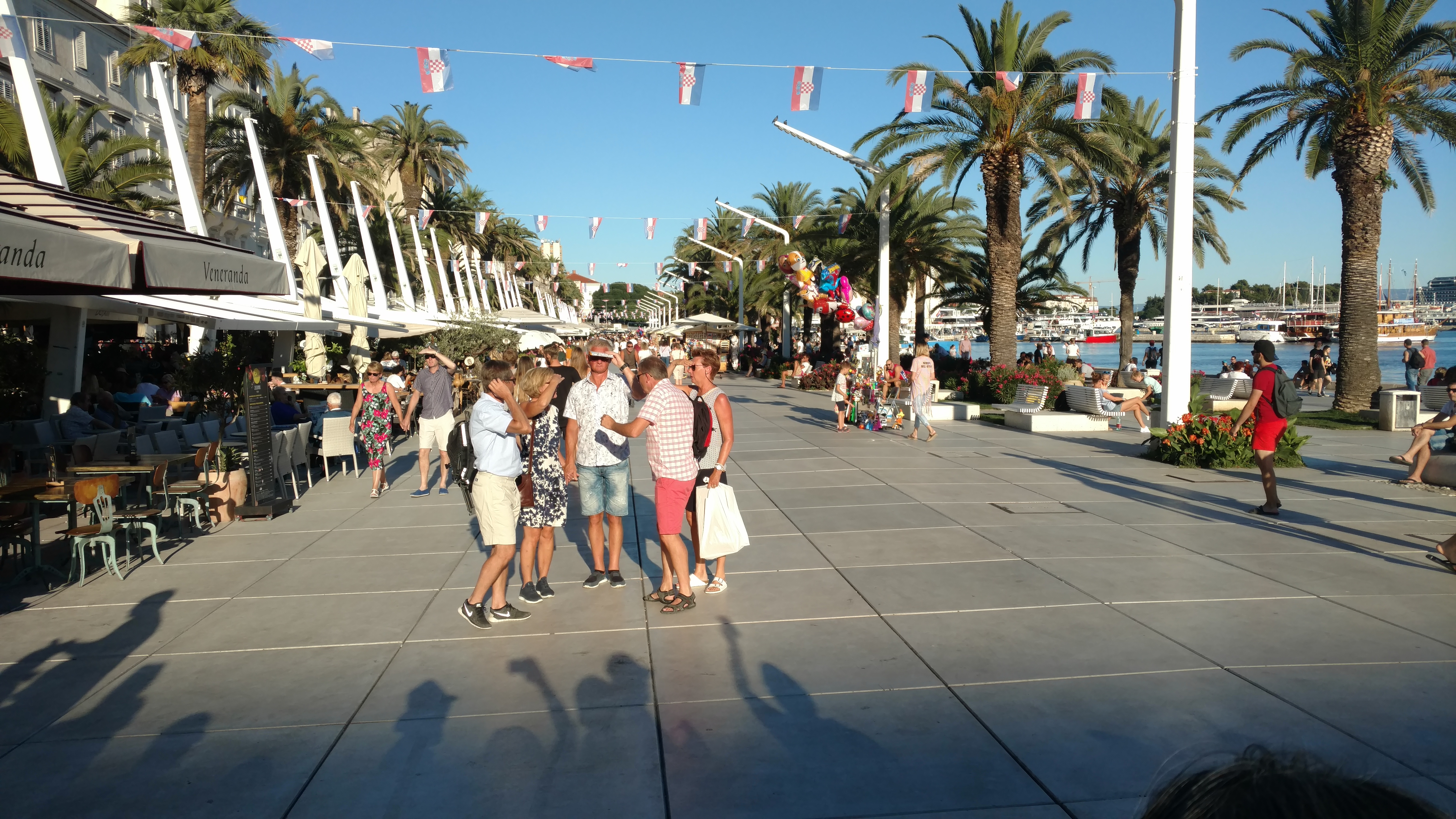 Riva Promenade with the sea to the right (L.Compisi)
Riva Promenade with the sea to the right (L.Compisi)
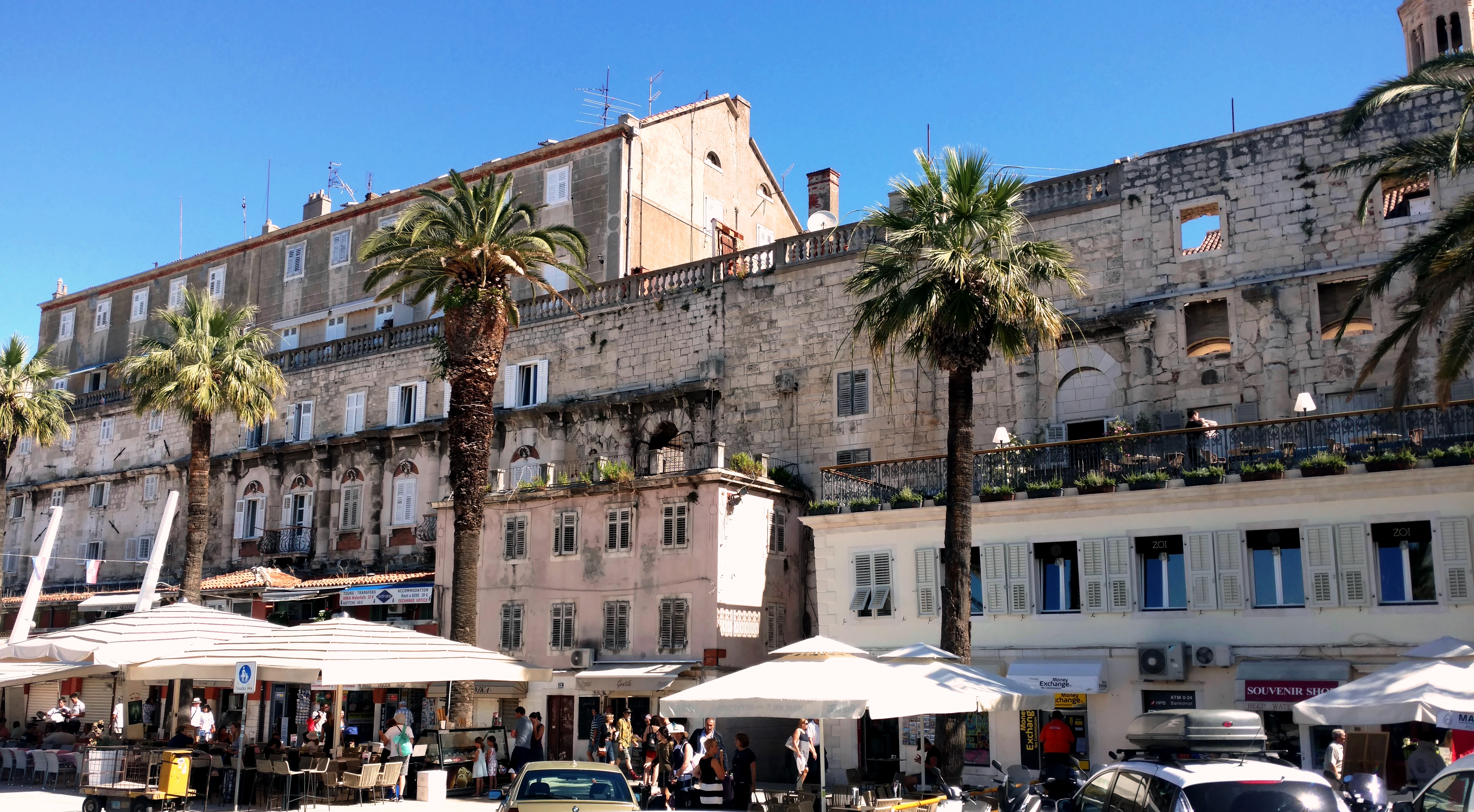 A portion of the Palace wall along the Riva (L.Compisi)
A portion of the Palace wall along the Riva (L.Compisi)
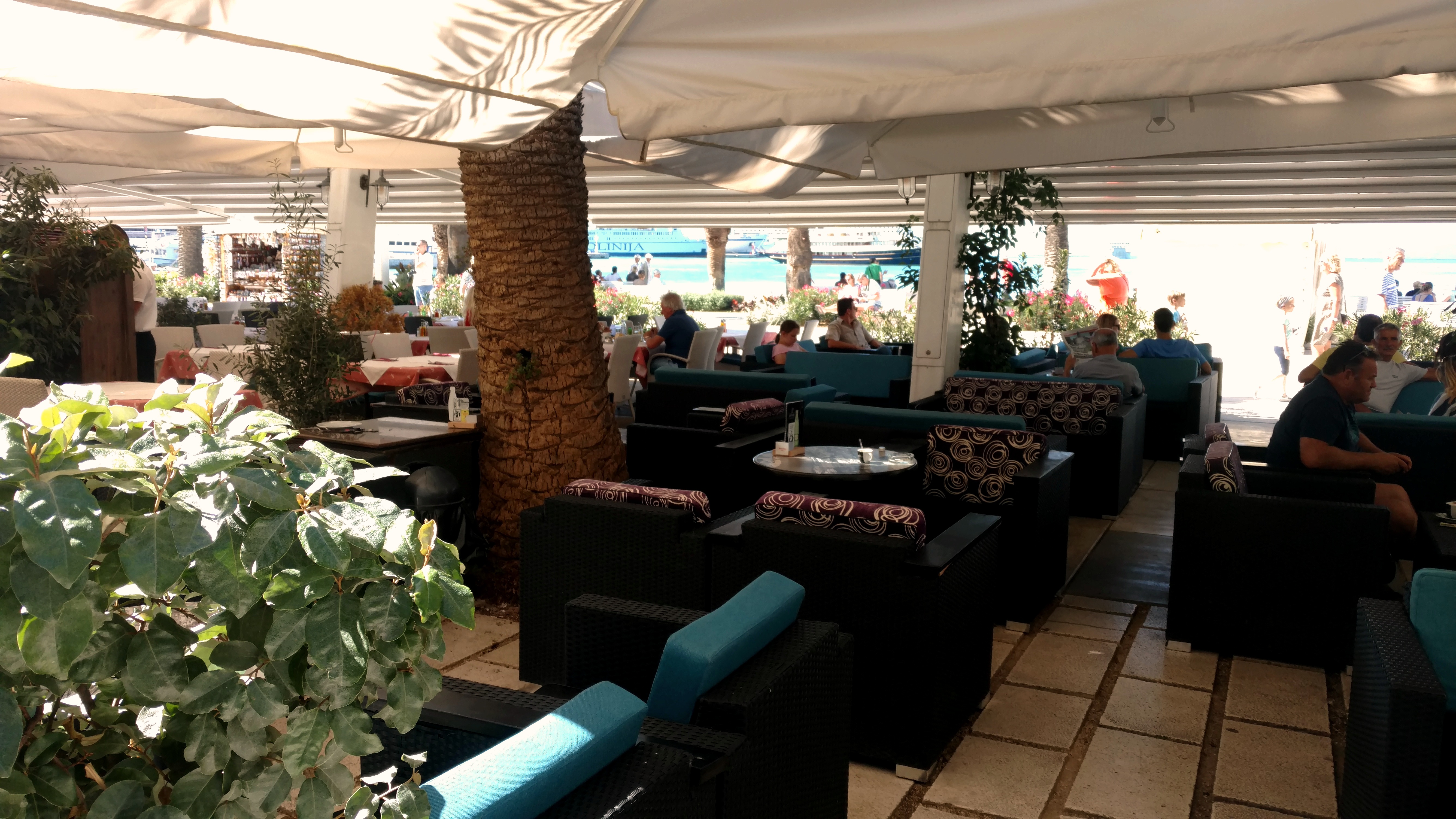 Dining al fresco along the Riva Promenade (L.Compisi)
Dining al fresco along the Riva Promenade (L.Compisi)
Within the old town are numerous sights of interest:
Marjan Hill is a short distance north of town and offers stunning views of the city, the Palace, the seaside and the surrounding hills. If you don’t like steps, uphill elevation changes and sweating stay away but we found the views very worth it. The restaurant at the top offers an opportunity to rest and recover.
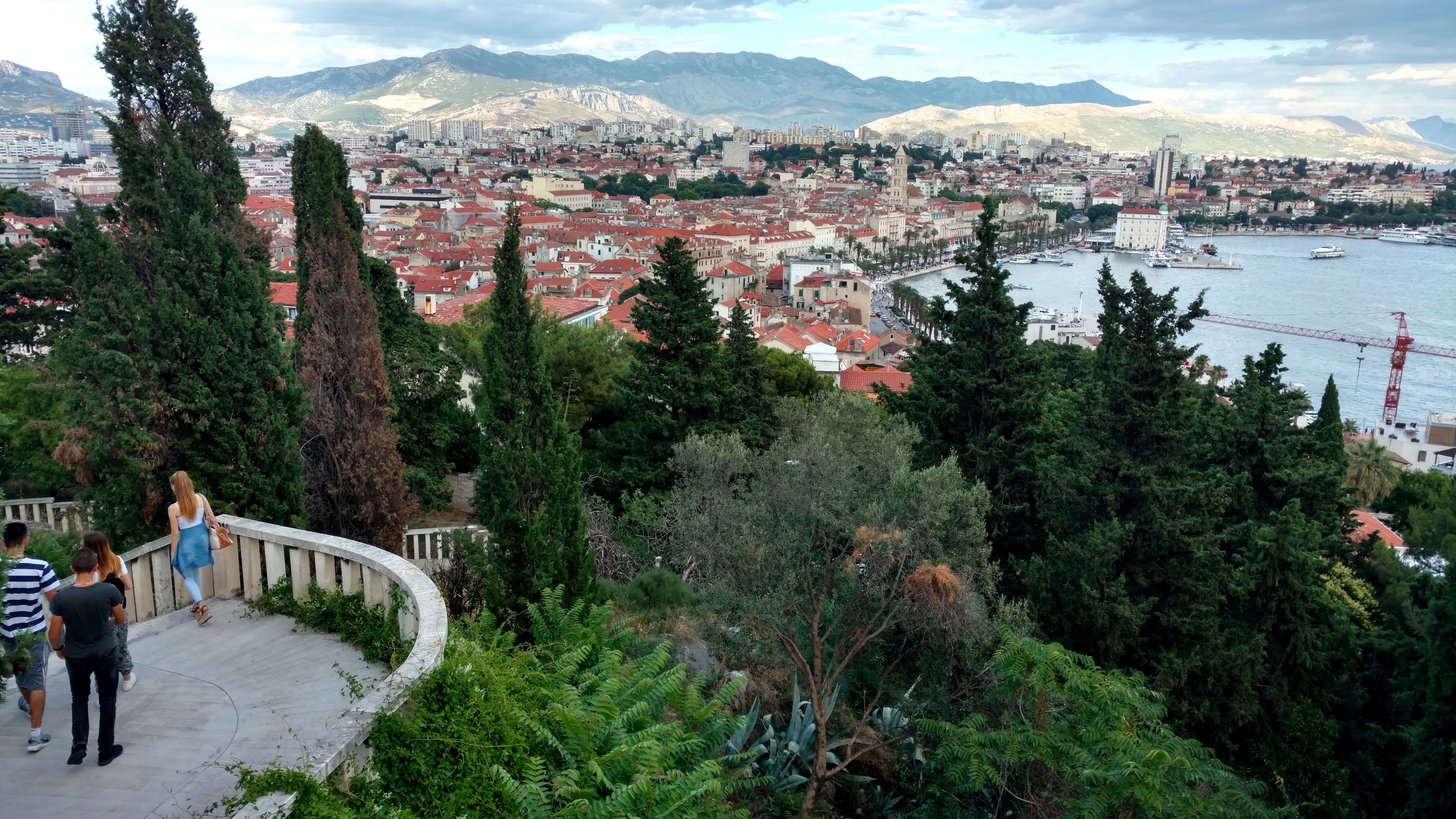 View of Split from Marjan Hill (L.Compisi)
View of Split from Marjan Hill (L.Compisi)
Just outside the East Gate of the Palace is a very large statue of Grgyr Ninski by renowned Croatian sculpture Ivan Mestrovic. Gregory Nin (in English) was a medieval bishop from Croatia who strongly opposed the Pope, stands just outside the Golden Gate of Diocletian’s Palace. Bishop Gregory introduced the national Croatian language into Catholic services (in place of the traditional Latin) in Croatia after the Great Assembly in 926 AD, finally making it possible for everyone to know what was being said during the service. The Status is 20 feet tall above its pedestal. It is a popular belief that that rubbing the bishop’s toe brings good luck. The toe is now smooth and shiny.
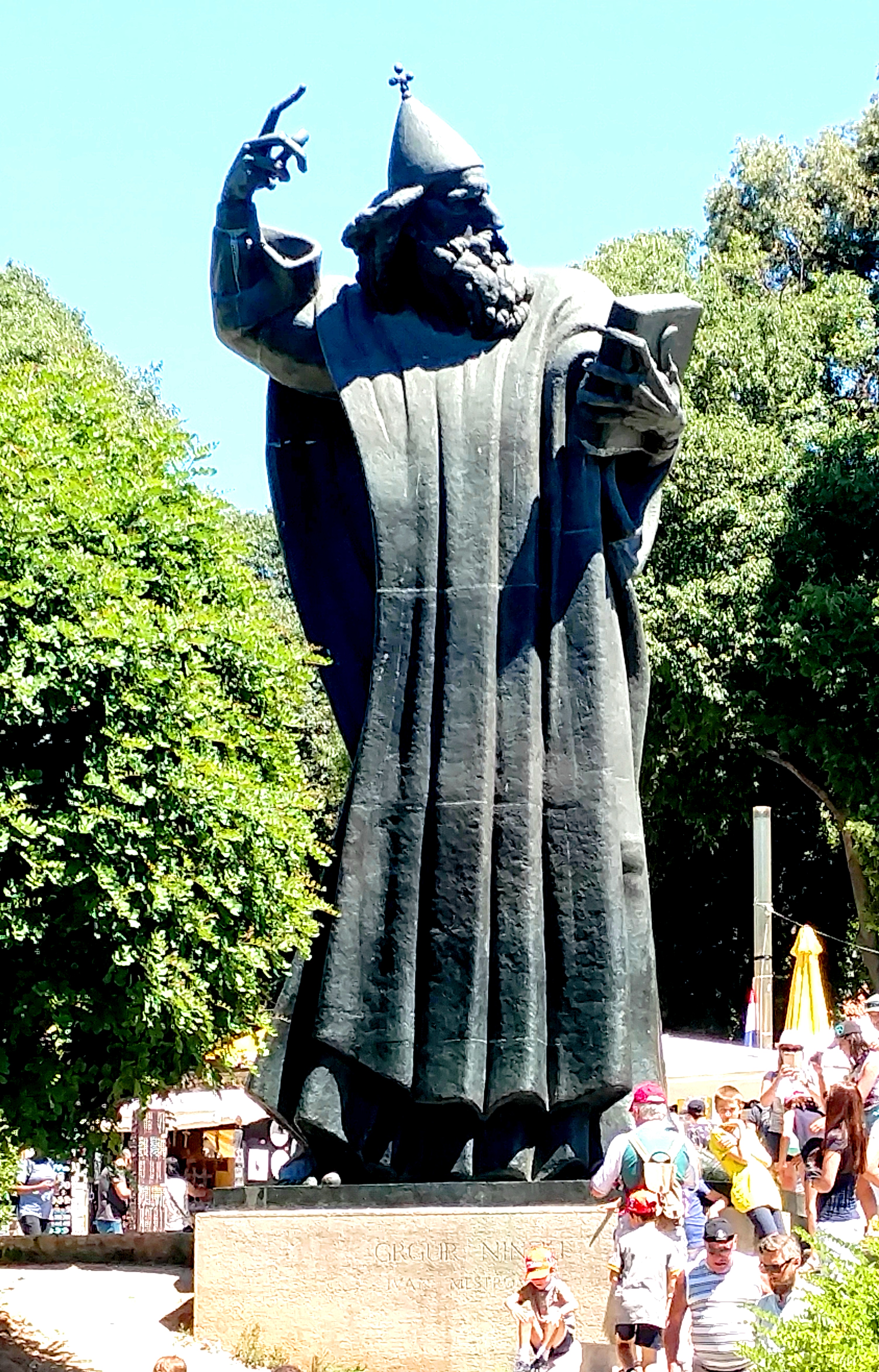 20′ tall statue of Bishop Gregory of Nin – toe rub for good luck! (L.Compisi)
20′ tall statue of Bishop Gregory of Nin – toe rub for good luck! (L.Compisi)
The Peristyle was the main gathering place for Diocletian’s subjects. Later on, as the city grew, the Peristyle was too small and the People’s Square, or Narodni trg in Croatian, became the main meeting spot. It has been so since the 14th century.
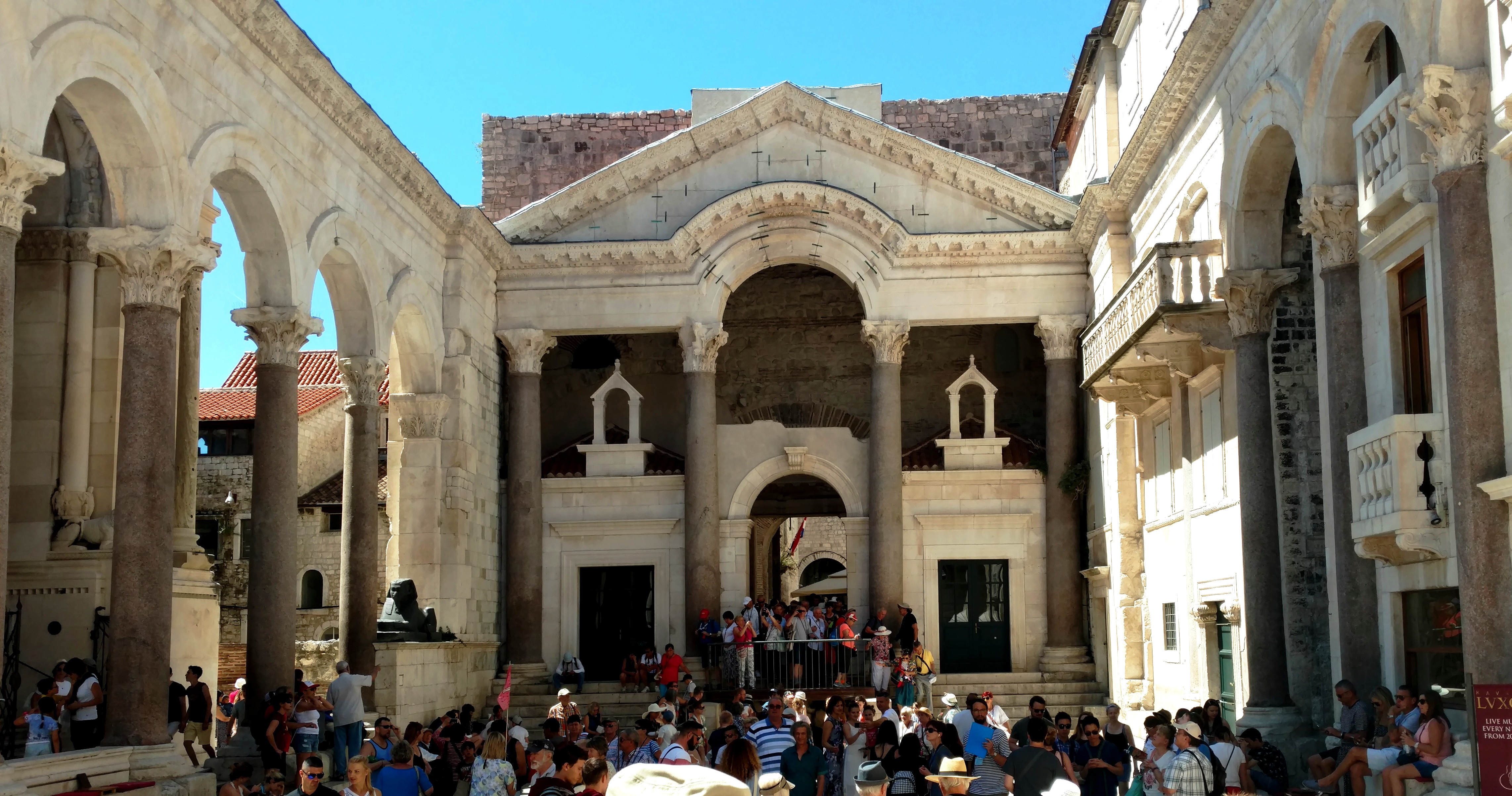 The Peristyle was the gathering place of the people during Diocletian’s time (L.Compisi)
The Peristyle was the gathering place of the people during Diocletian’s time (L.Compisi)
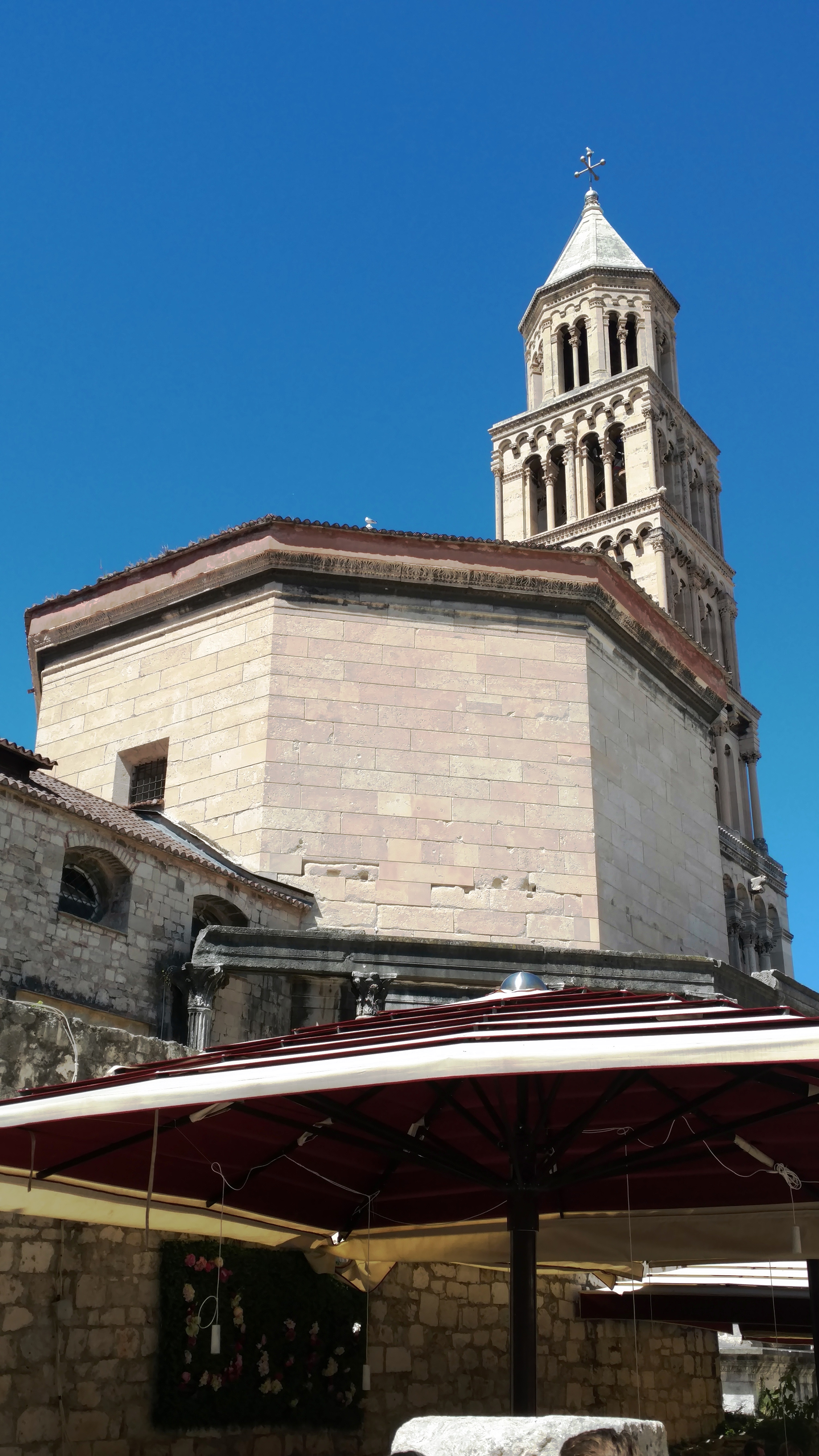 Saint Domnius Cathedral and Diocletian’s Masoleum overlook the Peristyle (L.Compisi)
Saint Domnius Cathedral and Diocletian’s Masoleum overlook the Peristyle (L.Compisi)
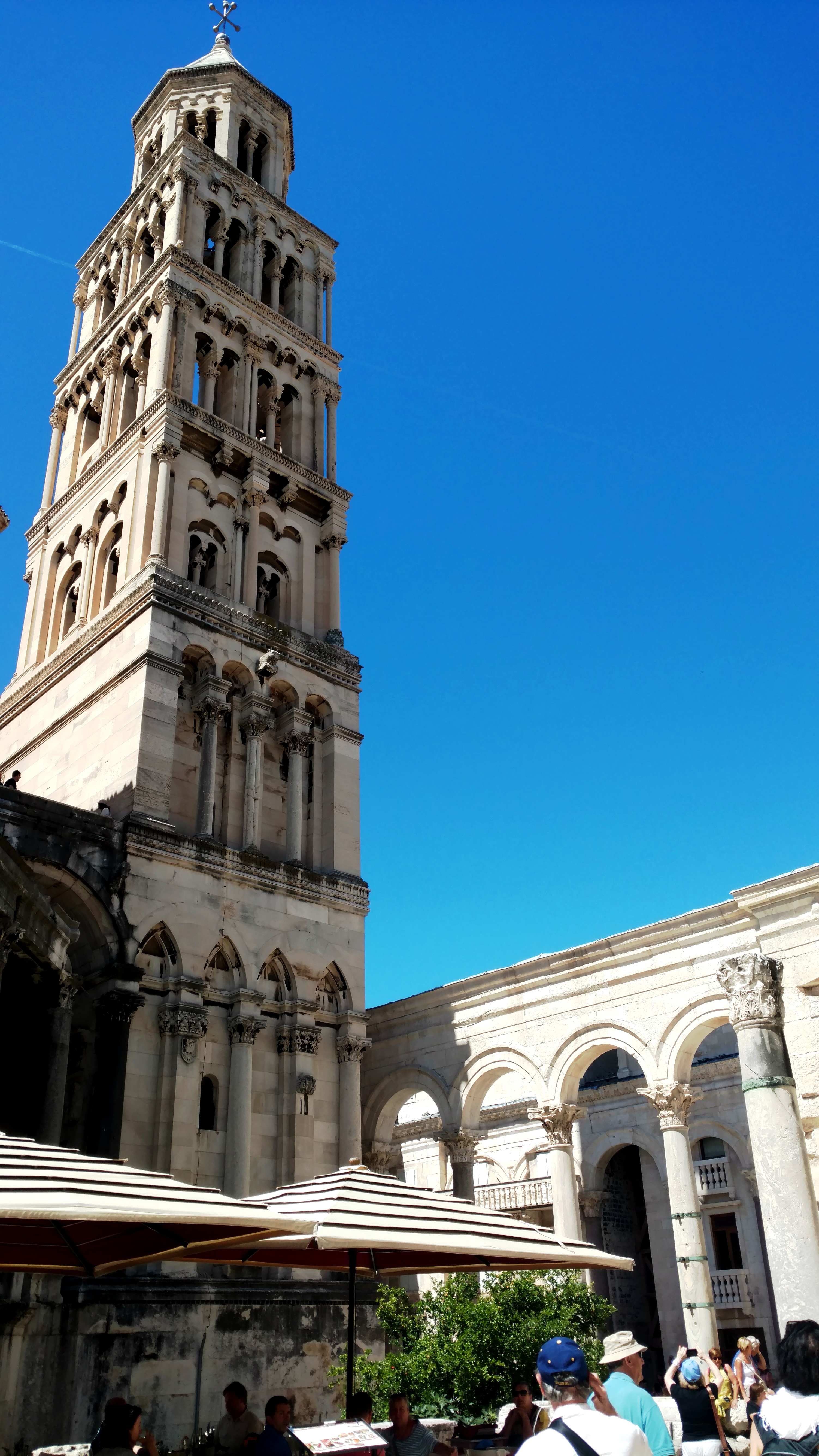 The Cathedral from inside the Peristyle (L.Compisi)
The Cathedral from inside the Peristyle (L.Compisi)
Republic Square is just west of the Riva. It is a three sided (the open side faces the sea) series of columned buildings that were designed to resemble St. Mark’s Square in Venice. It serves the city as an excellent venue for concerts and other events.
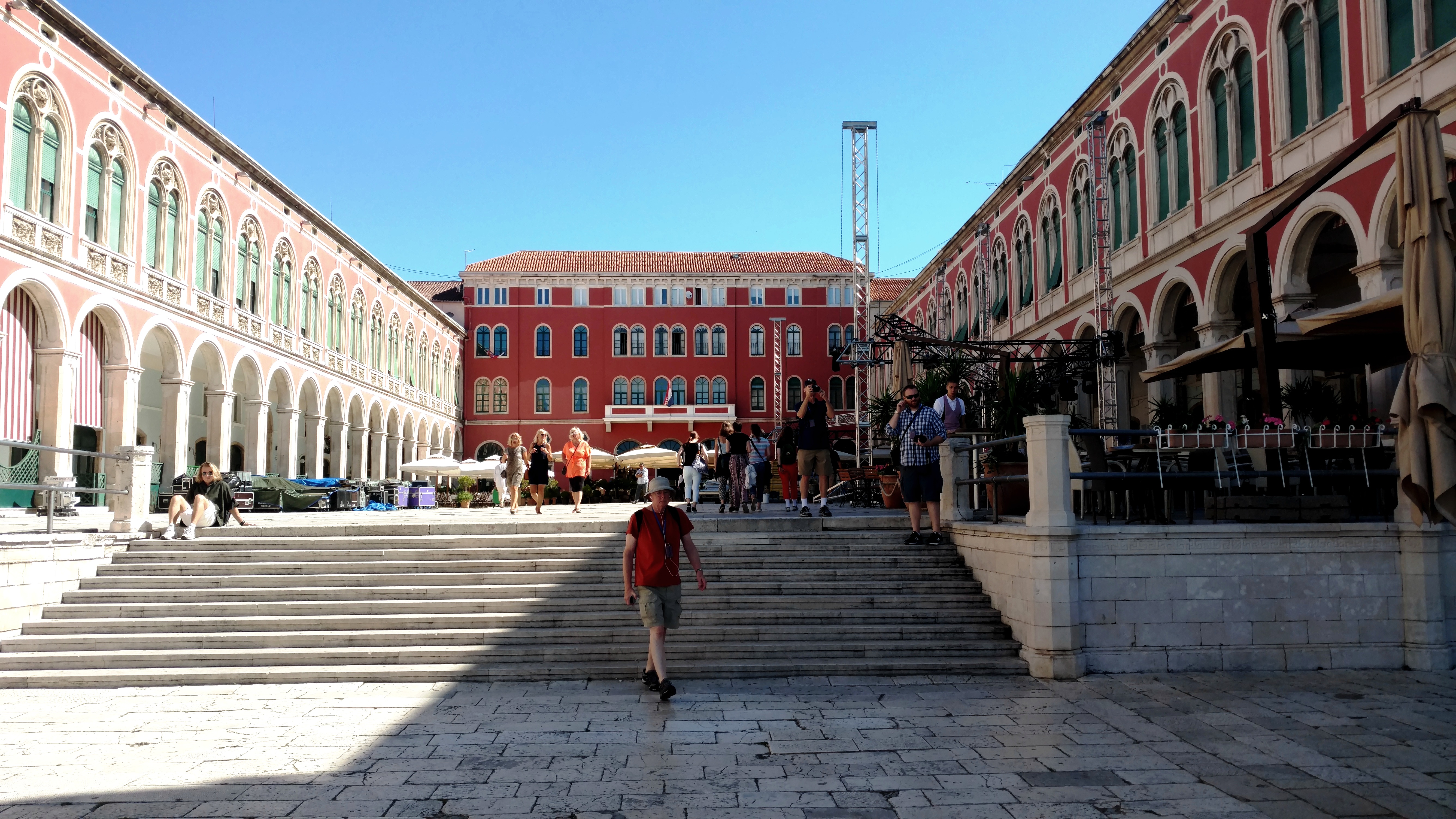 Republic Square is patterned after St. Mark’s Square in Venice (L.Compisi)
Republic Square is patterned after St. Mark’s Square in Venice (L.Compisi)
The weather in June, when we visited, was a bit steamy and hot. We usually travel to Europe in September and October and I think this would be a much better time to be on the Adriatic coast.
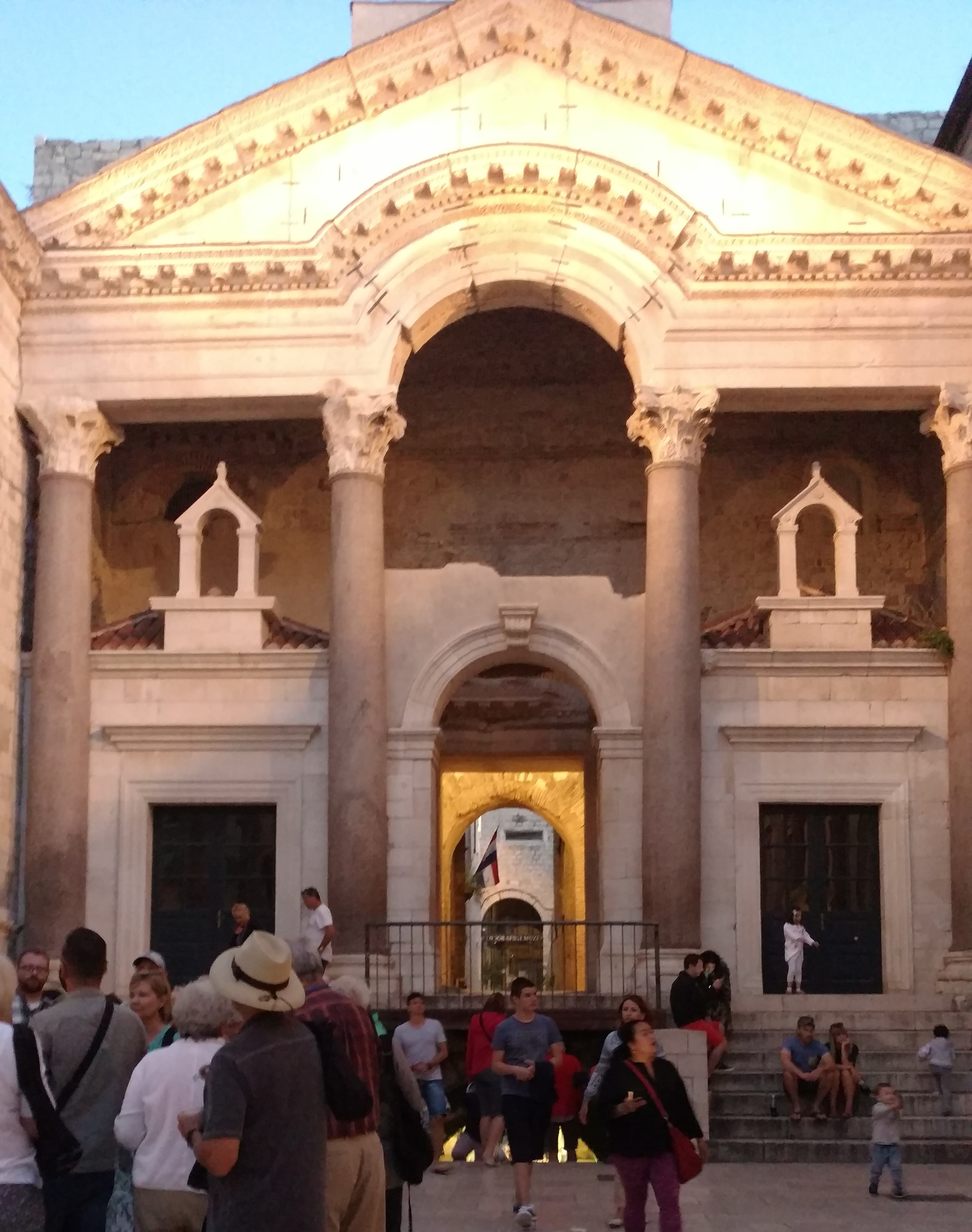 The Peristyle at night facing the Vestibule (L.Compisi)
The Peristyle at night facing the Vestibule (L.Compisi)
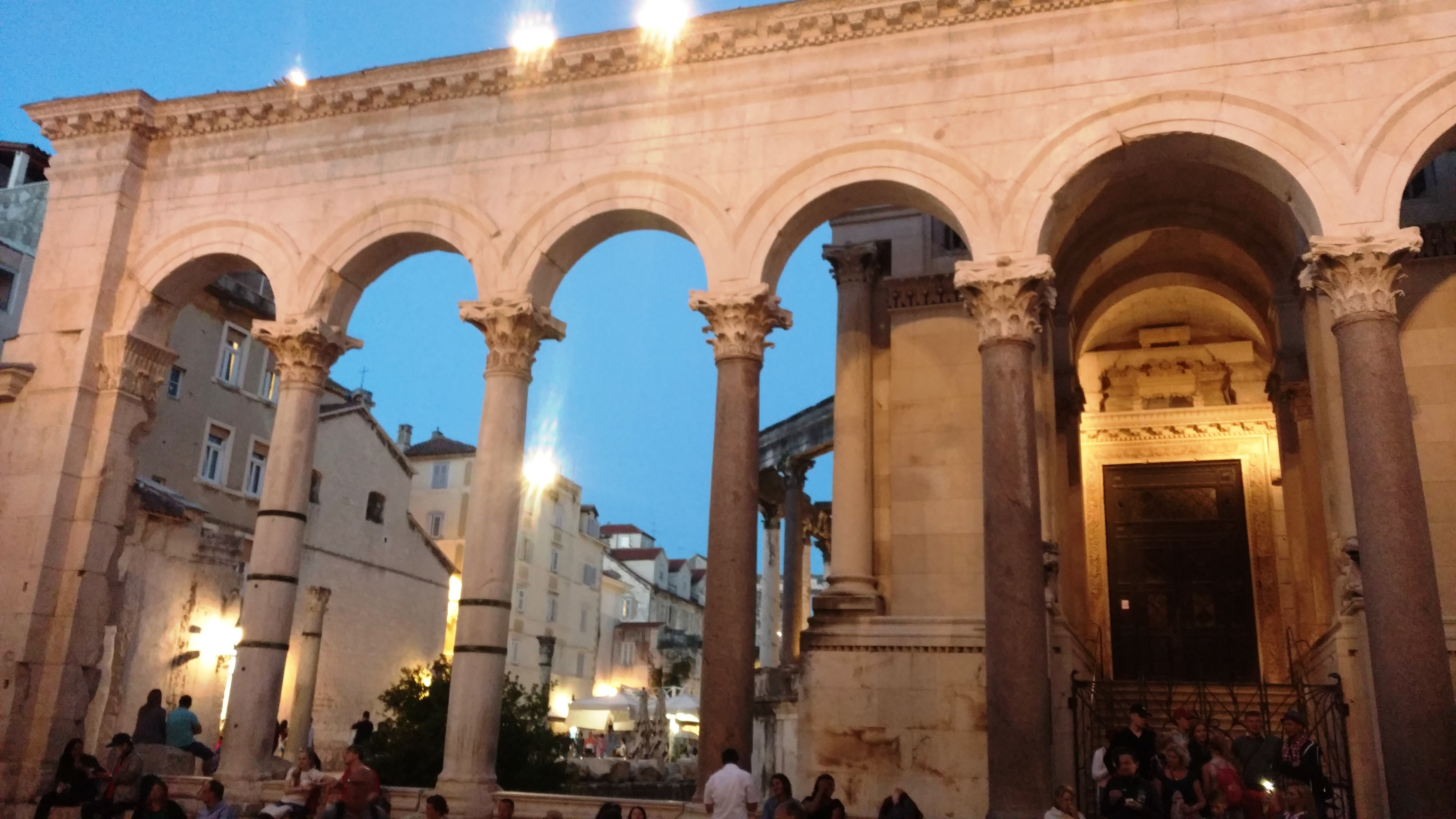 Looking toward St. Domnius Cathedral from the Peristyle (l.Compisi)
Looking toward St. Domnius Cathedral from the Peristyle (l.Compisi)
Two or three days is all you need to enjoy this beautiful and historic city along the Dalmatian Coast of Croatia. A true world treasure.
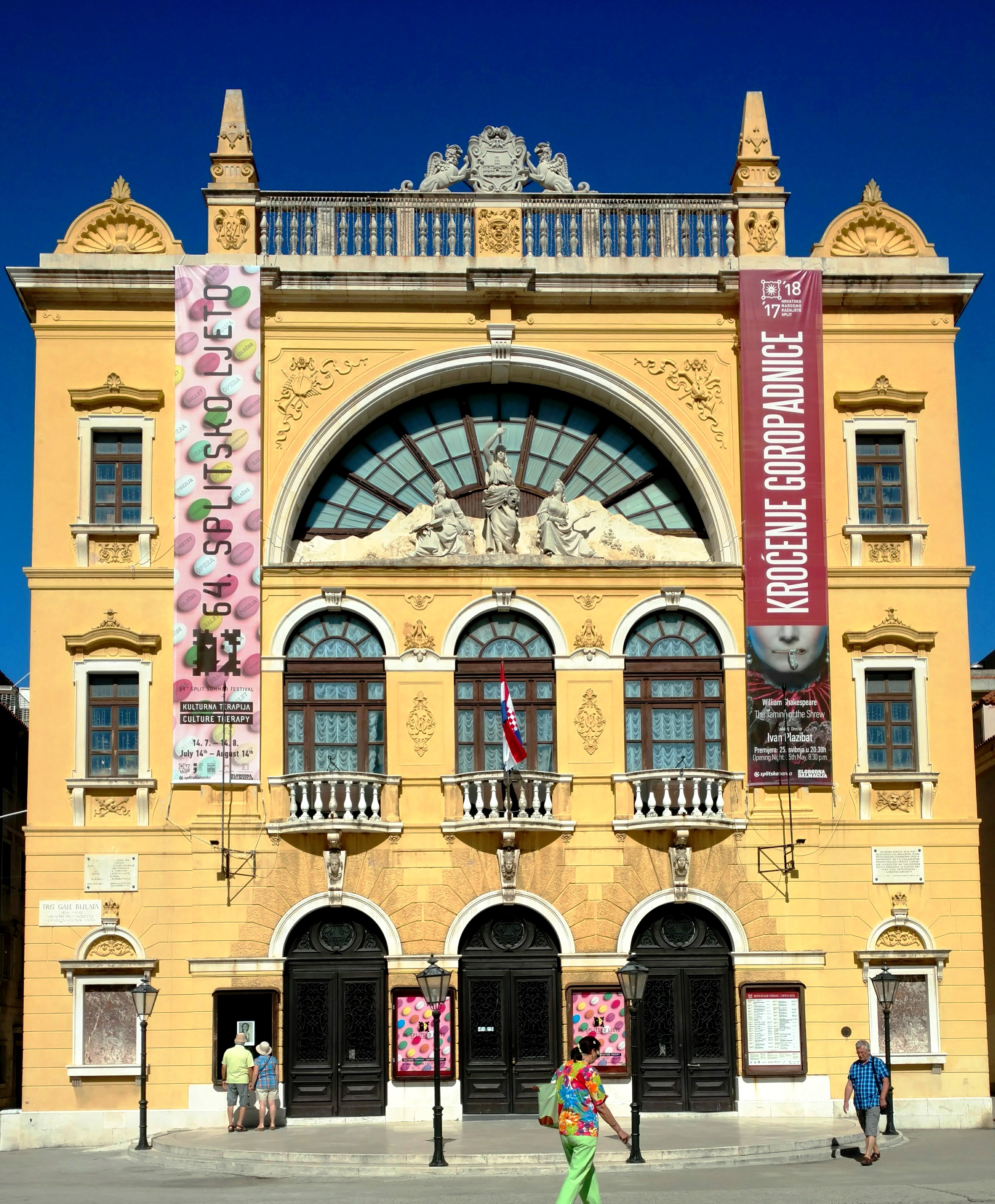 Crotian National Theater just outside the Palace walls (L.Compisi)
Crotian National Theater just outside the Palace walls (L.Compisi)
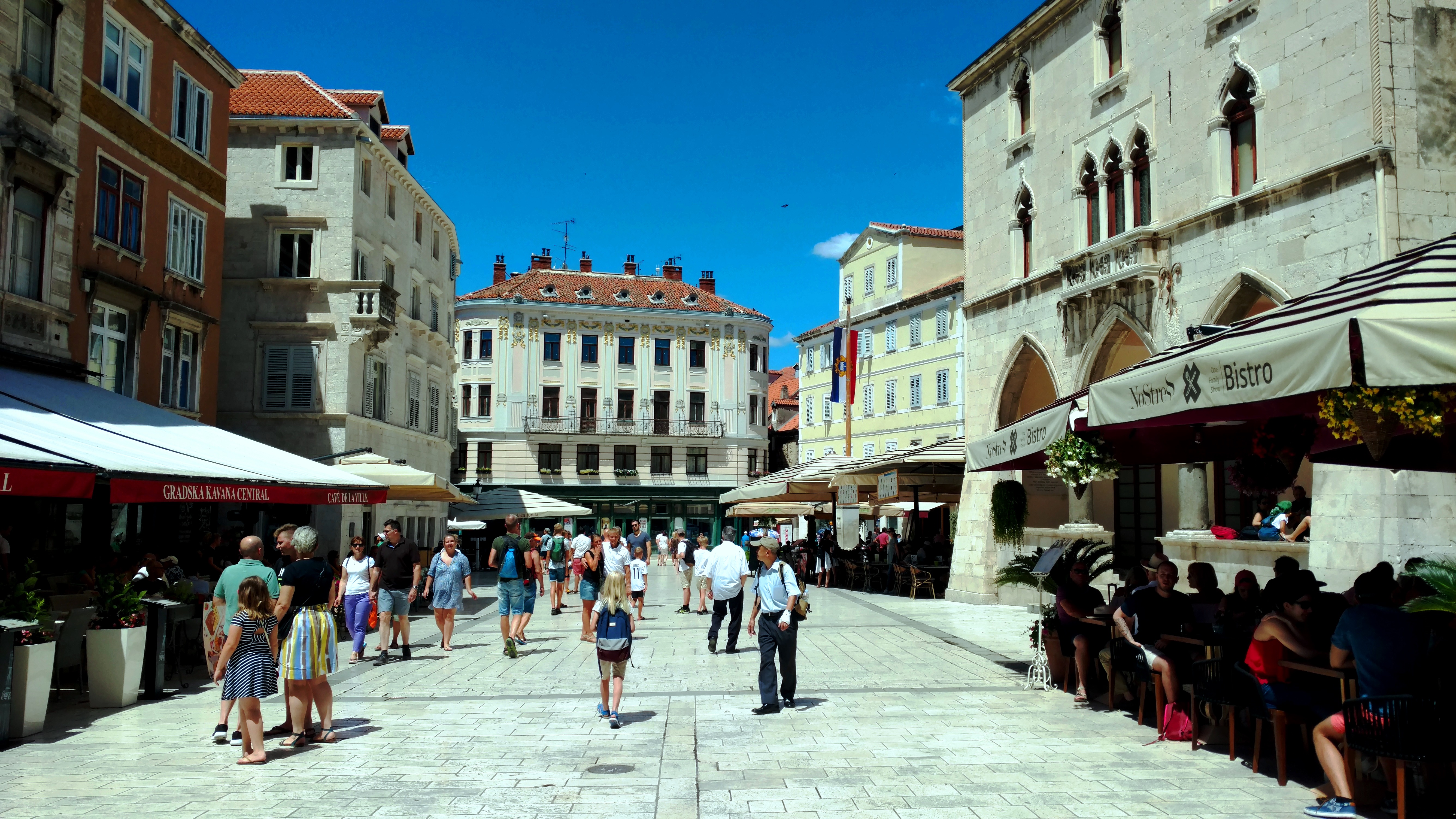 The People’s Square was created when the Peristyle was no longer large enough (L.Compisi)
The People’s Square was created when the Peristyle was no longer large enough (L.Compisi)
Check back for the next story about our most excellent European Adventure including Dubrovnik, Bosnia and Provence.